Have you ever wondered how to make your own clothes? For those who love creating things with their hands, chances are, the thought has crossed your mind.
Unfortunately, making clothes can be intimidating. There is, after all, a lot to the process! While sewing may be complex, learning how to sew clothes isn’t too hard with the right know-how and proper tools.
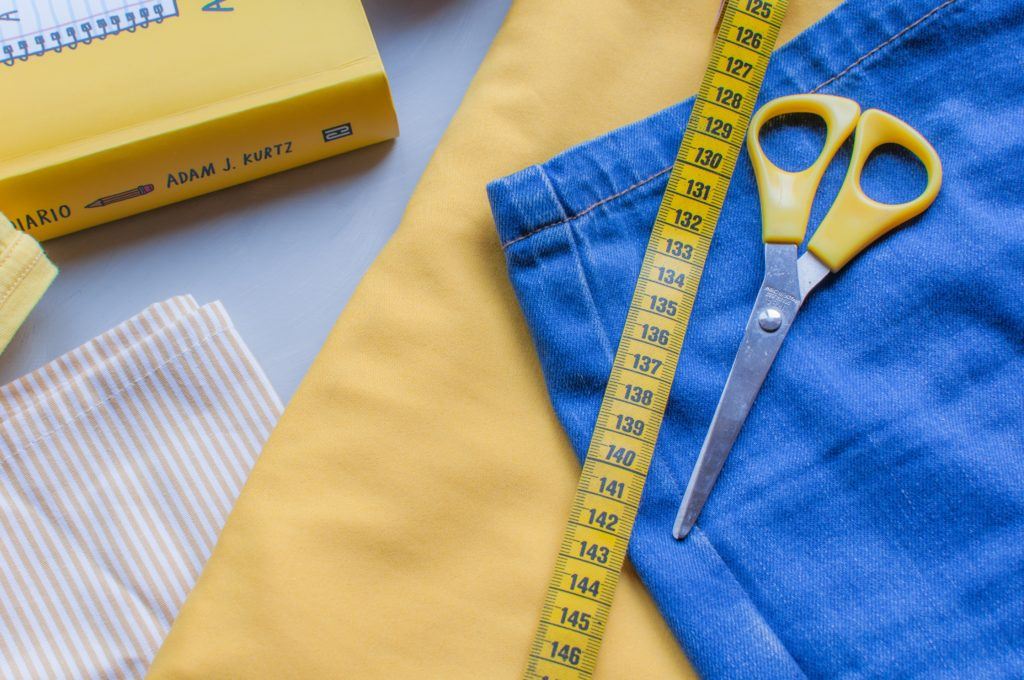
So, let’s dig into the process of making our own clothes from scratch, with a few handy tips that can allow you to jump over hurdles that may have held you back in the past.
But before we dive any deeper, why exactly should you make your own clothes?
Benefits of Making Clothes Yourself
If you haven’t really thought about making your own clothes before, it’s a good idea to start now.
Here are a few reasons why.
Environmentally Conscious
Commercially developed clothes come at a great cost to the environment. Did you know that for jeans alone, 1,800 gallons of water are used for every pair?
Not to mention all the water that we end up using just to wash them. There is also a great deal of fabric (not to mention clothes themselves) that ends up as waste.
In just the U.S. alone, textile waste amounts to 15 million tons.
Making your own clothes means that you get more choices in the fabrics you use while recycling fabric that you don’t need anymore.
We all have that one blouse that we never use and are too guilty to throw away. By sewing your own clothes, you can recycle that blouse into something you can be proud of.
And if you don’t want it yourself, you can always sell it on a third party marketplace!
Socially Conscious
Other than it being good for the environment, it’s good for society too. In this age of social awareness, the textile industry has been under scrutiny for questionable working conditions.
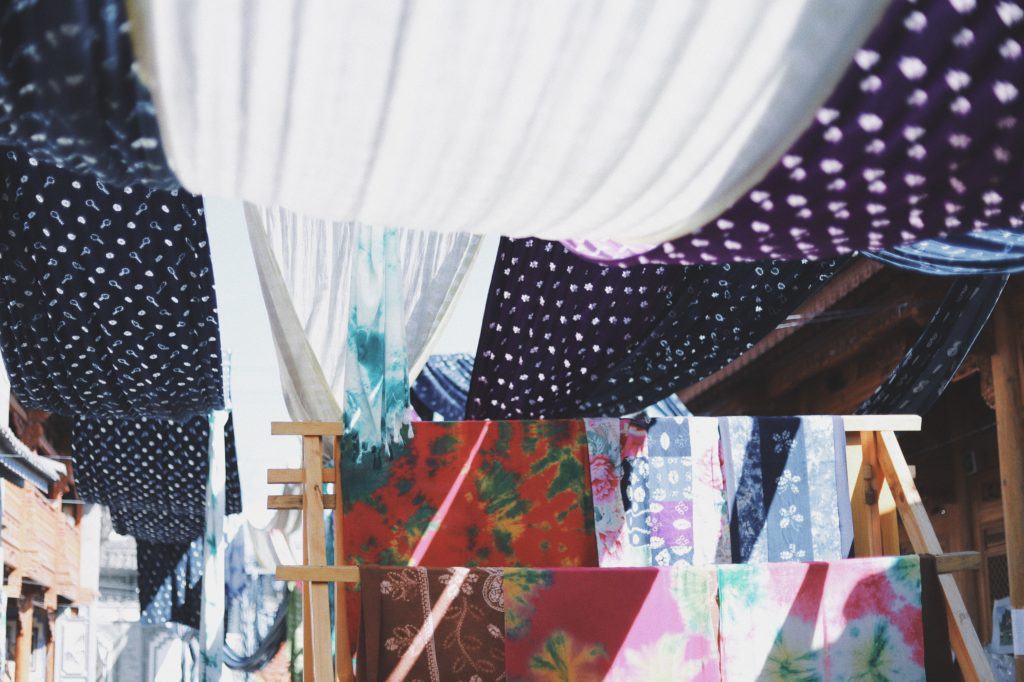
Buildings that aren’t up to code, child labor, and underpaid workers are just the tip of the iceberg. By creating our own clothes, we can ensure that we aren’t supporting an industry that makes a profit through immoral means.
Cost-Effective
Other than it being green and socially-conscious, creating your own clothes just makes sense financially. For those who have the time to do so, this craft will greatly reduce the cost of your wardrobe.
Sure, it may take a while before you notice a difference, but fabric, thread, and a few additional tools will all cost less than a single blouse or pair of jeans that cost $30 or more a piece.
More Design Choices
Let’s face it. Shopping can be exhausting. Especially for those who don’t usually have clothes catered to them (like plus-sized women and those with allergies to certain textiles,) it can be a frustrating experience.
Or maybe you can still find clothes that fit you, but you just really want a skirt with pockets for once.
Making your own clothes solves this problem; no more walking into the tenth store just to realize they don’t have what you need.
You can use smart software and apps to come up with some truly unique design ideas.
Fun
And of course, making your own clothes is fun! Clothing is an art, after all.
With the skill of sewing on your side, you can fashion your wardrobe out of any pattern that your heart desires.
Making Clothes Using a Sewing Machine vs. Sewing by Hand
While it is possible to make your own dress without the use of a sewing machine, it may take more time and effort than you are willing to commit – depending on the type of dress, in particular.
If it’s the price tag that’s stopping you from buying a sewing machine, consider the fact that an investment such as this will pay dividends.
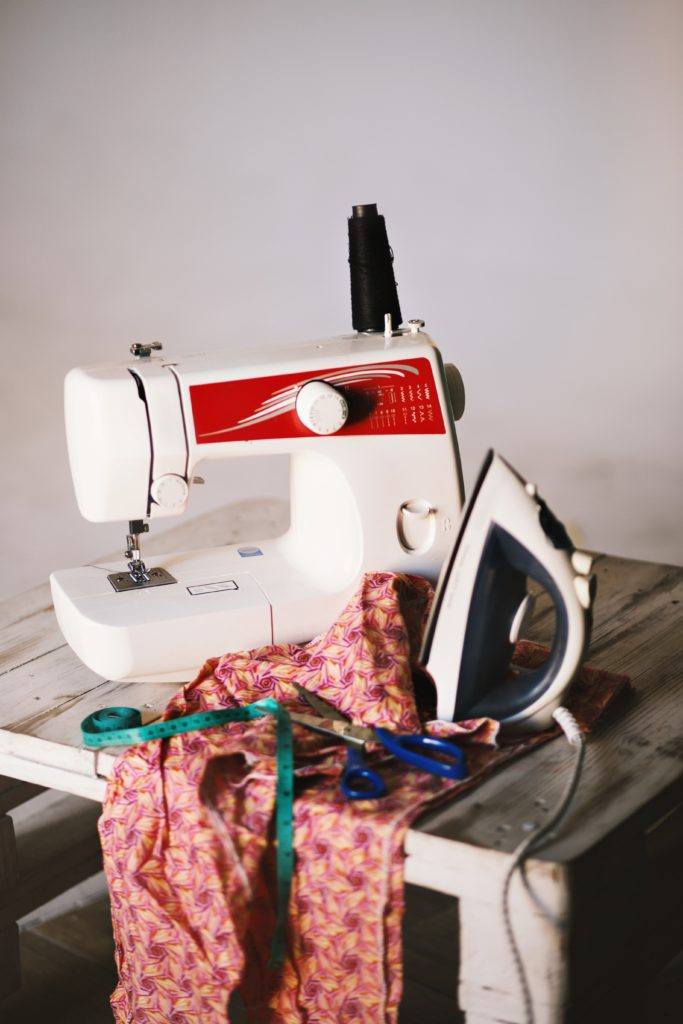
It may seem cheaper to sew by hand, but the effort and time it requires are too high for the final product. You may even get discouraged halfway through!
For those who want to cut costs, try buying second-hand, or keep your eyes peeled for discounts.
Sewing Machine Types
When evaluating sewing machines, there are four general categories. They are the electronic machines, computerized machines, overlocker machines, and mechanical machines.
For beginners, the only machines that you need to concern yourself with are the electronic and manual ones.
All other types are too advanced for beginners and will be specialized for techniques that you won’t need to use.
For those with parents or grandparents who know how to sew, you’re probably familiar with mechanical sewing machines.
Mechanical varieties are powered manually, using a wheel or a dial on the side of the machine. This, in turn, controls the needle fitted into the device.
Electronic machines are, as their name may suggest, controlled by electricity. The speed of the needle is handled by the machine itself at particular settings, which does speed up your work.
Electronic vs. Mechanical Sewing Machine
The question then becomes, should you buy an electronic or a manual machine?
Perhaps the most important distinction between the two is the number of features they have. Because it is powered by electricity, the electronic machine will have more functions than a mechanical machine.
However, mechanical types are better in other aspects. In fact, Sewing Machines Plus recommends that beginners start with a mechanical type because it has fewer components, making it easier to learn the basics.
Additionally, a mechanical type is still usable even in a power outage. If that’s not enough, mechanical machines are cheaper too.
The biggest disadvantage of choosing a mechanical type is that it may be harder to shop for. Most are vintage models since there aren’t a great number of them currently in production.
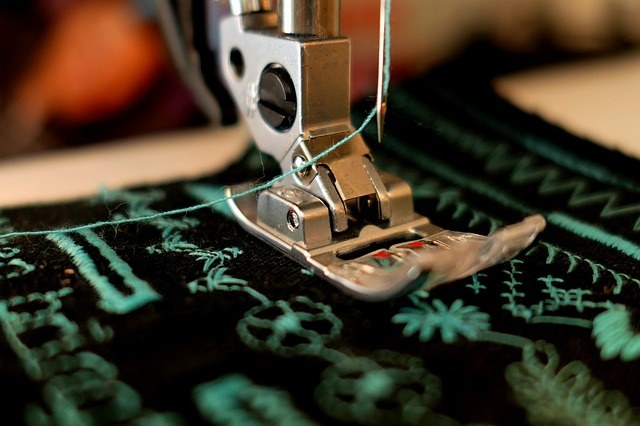
What Features Should Your Machine Have?
When you’re in the market for a new sewing machine, it may be overwhelming to comb through the list of features that each model has.
These are the three features that Sewing Machines Plus recommends looking for in your beginner sewing machine.
Built-In Needle Threader
Threading your needle will be a task you complete hundreds of times as a beginner sewist. If you do it that many times, chances are, it will become mind-numbingly frustrating.
A needle threader will make your work far more enjoyable and will save you a lot of time. The feature operates in the way you expect: it threads your needle for you, with very little input needed.
Top-Loading Drop-In Bobbin
Bobbins, those cylinders around which the thread is wrapped, can be a pain to replace if your bobbin doesn’t load from the top.
Without a top-loading bobbin, you won’t be able to check how much thread you have left at a glance, and you are required to dig through the machine when replacing it.
This feature allows you to speed up a fundamental task in sewing, with far less effort.
Free-Arm Capability
A free-arm sewing machine provides you with the space to move your hands and your fabric around, both near and under the needle.
If your machine isn’t free-arm, you will only be able to sew long pieces of fabric — which is a problem if you want to sew sleeves or most hems.
Here’s a video showing some basics of sewing clothes.
Where to Buy Materials
Now that you have your sewing machine, where do you buy your materials? There are many options available, most of them online.
While brick-and-mortar stores do let you feel and examine the material first-hand, shopping online means you can explore the best deals and peruse through a large selection of fabrics from different manufacturers.
For beginners, the sign of a good online marketplace is if they have a brick-and-mortar store also. Most of the time, places like these are already established in the sewing community and have decades of experience behind them.
One such vendor is Joann. Joann has a large selection of fabrics that you can choose from, as well as other sewing materials such as interfacing and bobbins.
Shopping at their online store is faster because you can skip long lines. You can also opt to pick up your materials in-store so that you can skip the shipping fees.
Another good online marketplace is Fabric.com. They have a wide array of fabrics for whatever garment you’re planning to make.
What’s great about Fabric.com is that they also have tutorials and guides on their site, which makes it incredibly friendly to beginners.
While it may be niche, Vintage Patterns deserves a mention. This is a vendor which collects patterns from as early as the Roaring 20s. As a bonus, anyone can add patterns, so as to broaden the site’s overall selection.
While this may not be your style, vintage patterns have influenced modern-day fashion. As such, even if you don’t deck yourself out in retro style come 2020, perusing the collection may inspire a creative spark or two.
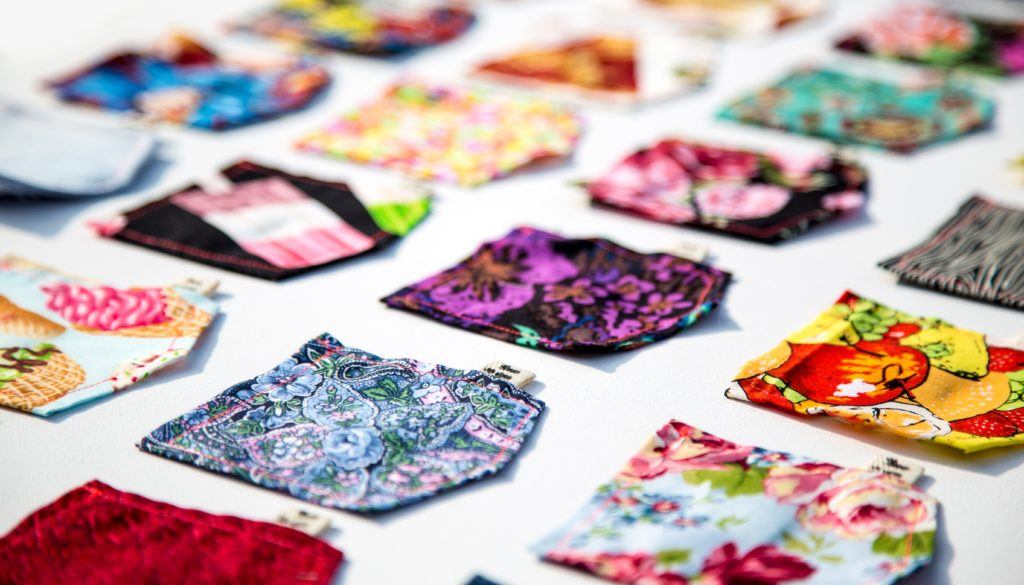
Patterns to Start You Off
Now that you have your fabric, why not try out at a pattern or two? Sure, you could dip your toes in the water by stitching a bag or a pot holder, but why not jump directly into sewing clothes?
If you have cold feet, don’t worry. When we say these projects are for beginners, we really mean it!
Just try this fifteen-minute pattern from Heather of The Sewing Loft.
Fifteen-Minute Pencil Skirt
For this pattern, all you need is fabric and an inch-wide piece of elastic. Start by measuring your hips, as well as the length that you want your skirt to be. Then stitch the elastic band, and you’re good to go!
Of course, for more detailed instructions (and pictures), check out the blog post here.
How to Make a Dress
See our guide: how to sew a dress.
What about that dress we’ve been talking about? Well, this jersey sheath dress takes half an hour.
The hardest part of this sheath dress by Melissa Esplin is the measurements. After that, you only need to combine the parts, and you’ve got yourself a dress!
To check out the pattern (and, again, the ever-necessary pictures), view her blog post about it here.
Where to Find Patterns for Sewing Clothes
Now that you’ve had a taste for sewing clothes, you may want to check out other projects to try your hand in. But where exactly do you find more patterns?
There is an incredible number available online, whether on an official sewing website or just Pinterest!
Blogs Over Social Media
You’ll find the best quality on blogs, since the more detailed the instructions are, the easier your process will be.
Pinterest is a great place for discovering cute looks, but occasionally, they fail to link to the original pattern.
Most of the time, bloggers have made and adjusted cute patterns for themselves, so you can be sure that they are tried and tested.
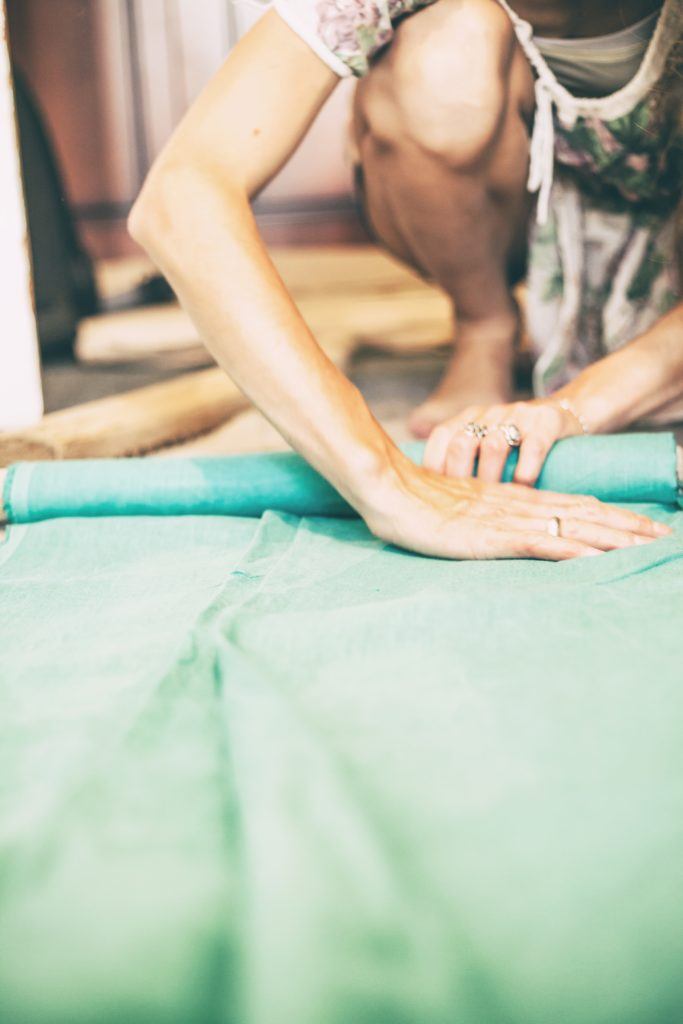
Vendor Sites
Another place for discovering beautiful patterns is at online sewing shops, like those we have previously mentioned.
You may be encouraged to buy these patterns, but there are always a variety of free options for you to test drive.
Specialty Pattern Sites
Of course, there are sites that are fully dedicated to curating patterns. One such locale is the Sewing Directory.
Other than sewing patterns, they also host a large number of guides about sewing, such as how to create different stitches or how to make alterations (e.g. making a shirt smaller). Here is their list of projects that are perfect for beginners.
Another site is HobbyCraft. While most of the patterns on this site are behind a pay-wall, they also have patterns that are free to use.
These designs can be a great jumping point for any beginner. If you want more patterns for their site, the paid options are always available.
This video shows how to read a pattern for sewing clothes.
On the Road to Sew
As with any new skill, leaning how to make clothes can take a fair amount of effort. Nonetheless, learning how to repair, alter, and make clothes can save you a lot of frustration, time, and money.
Once you’re able to save damaged clothes and update your style for pennies on the dollar, the advantages of this skill will cease being superficial and start being financial!
While you may encounter hardships along the way, it’s just a matter of time before you can whip up a dress like nobody.
All it takes is a bit of practice and dedication, and you are bound to create the perfect outfit in no time.
What’s your favorite thing about making your own clothes?
